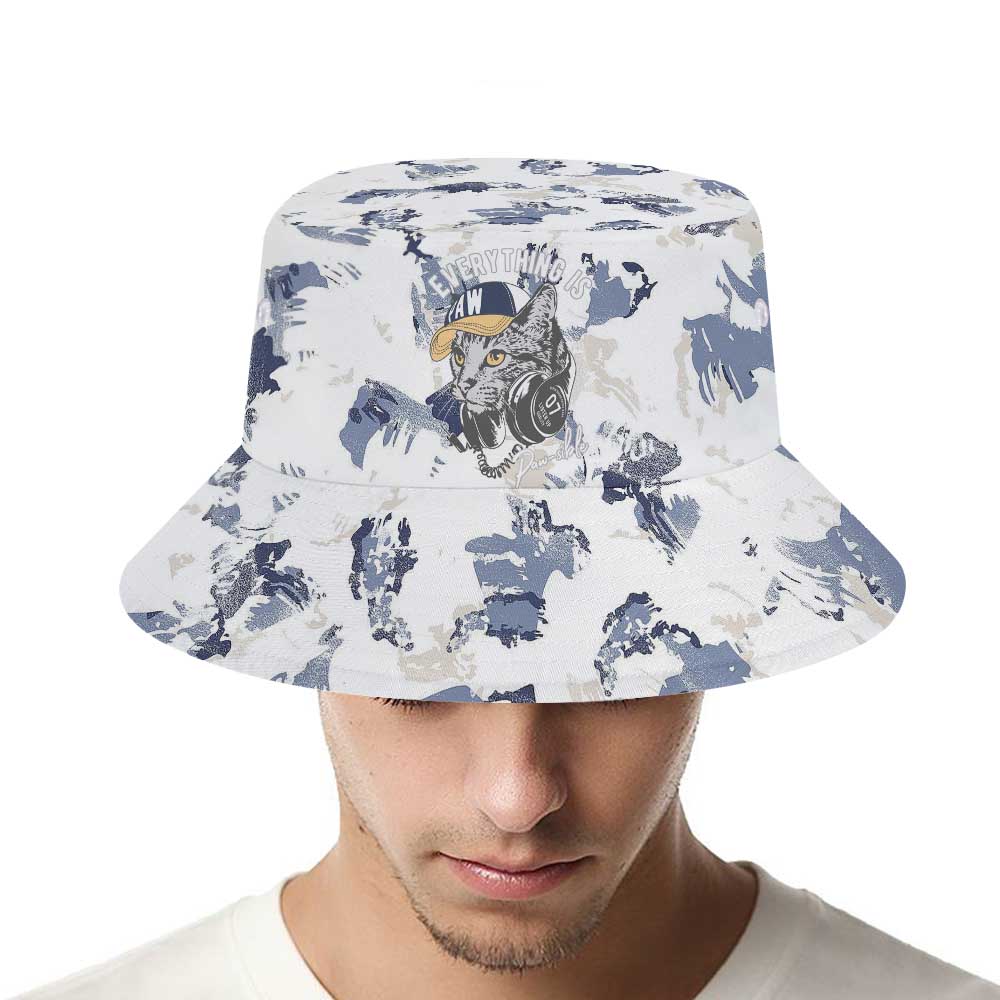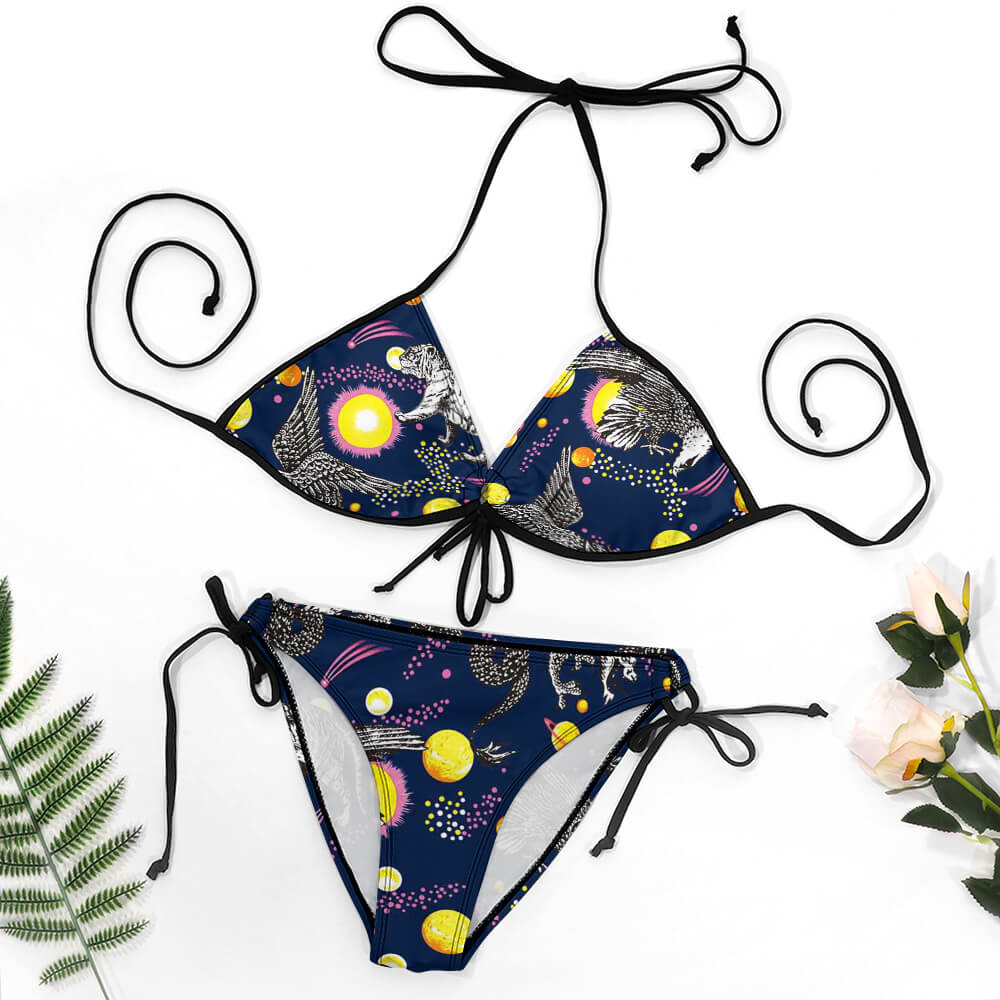What is AOP? Everything You Need to Know About All-over Print
If you're familiar with print-on-demand, you've probably heard of All-Over-Print (AOP), a recent trend in print-on-demand apparel. Unlike traditional garment printing, it allows the design to be applied across the entire garment surface. This printing technology isn't limited to clothing; it can also be used to print blankets, bags, and other accessories. In this article, we'll delve into this technology and provide tips and key information to help you better understand and utilize all-over print design.
What is all-over printing?
All-over-print, also known as AOP, Full Print, or Full Bleed Print, is a printing technique primarily used in on-demand garment printing. It allows designs to be printed across the entire garment. For example, an all-over-print T-shirt will have the print covering the front, back, and shoulders. It also presents a complete design element, resulting in a fantastic visual effect.
To determine if a garment uses the AOP (All-Over Print) technique, examine its seams, hem, and zippers. If the hem or inside of the garment appears printed, it indicates that the design was printed before the garment was sewn. This is a typical cut and sew characteristic of all-over prints.
How is all-over-print done?
Simply put, AOP (Artificial Printed) fabric is made by first printing on a flat piece of fabric, and then cutting and sewing it into a garment. This differs from regular printed garments, which are printed after the garment is sewn.
Firstly, the designers' designs were presented in the form of large templates, and the final effect of this design on the entire garment was flawless and impressive.
The designer uses cutting and sewing templates to show each piece — front, back, sleeves, hood, pockets, etc. —and then leaves a bleed margin on the work so that the print can cover all edges for a perfect finish. We will discuss bleed margins in more detail later.
Next, printing can be done on these designed fabric pieces, usually using a sublimation printing technique. After the pattern is printed, workers will cut along the pattern lines on the fabric and sew these printed pieces into finished garments. This is why all-over-print is also known as "cut-and-sew".
What are the advantages of AOP?
The biggest advantage of AOP is that it provides creative freedom that traditional printing cannot match , allowing for a more refined and professional visual effect and avoiding common problems in traditional printing such as awkward white edges or uneven pattern cutting.
In addition, because most AOP items use a sublimation process, the colors are exceptionally vibrant and long-lasting, and will not crack or peel over time. Furthermore, because the ink bonds directly to the fabric, the garments are also lighter and more breathable.
In terms of sales, AOP products appear more refined and upscale, conveying a greater sense of value, making them easier to price and potentially resulting in higher profits for sellers.
What is bleed in AOP?
In AOP, "bleed" refers to the extra "safe area" you leave around the edges of your design. Why leave a bleed area ? Because garments are printed first, then cut and sewn. AOP designs can't simply be filled into the template shape. Your work must be slightly larger than the panel size, typically 0.5-1 inch (1-3 cm) larger on all sides. This "extra" area is called the bleed area , but it will be cut off during the cutting process. Most fabrics may have slight deviations during cutting; if your pattern only extends to the edges, even a few millimeters off will result in white edges, which looks very awkward. Bleed is the "safety zone" you leave around your design to ensure your AOP product looks fully finished and professional.
Tips and Tricks for All-Over-Printing
Looking for some practical All-Over-Print tips? Here are some insider secrets compiled by PeaPrint's printing experts to help you and your clients achieve the best results with full printing.
Always use high-resolution artwork
Since the AOP pattern will cover the entire garment, any low-resolution image will likely result in pixelation, making it very noticeable. The pattern used for printing must have a resolution of at least 300 DPI and be large enough to accommodate the entire garment template.
Design on full templates
Always use the cutting and sewing templates provided by us or other on-demand printing suppliers. Designs that deviate from the template cannot be applied to the actual product. You need to ensure that your design flows naturally and smoothly across the seams.
Expanding beyond the bleed
Always extend your artwork beyond the cut lines (bleed) to avoid white edges. Typical bleed size is 0.5–1 inch (1–3 cm) depending on the supplier. It is important to note that for sizes larger than XL, you will need to increase the bleed area to ensure that the bleed area covers enough space to accommodate the printed content.
Key content should be kept away from seams
It's difficult to achieve perfect alignment of patterns at seams; some misalignment is inevitable. For graphics that must be perfectly aligned, avoid seams whenever possible, or carefully check the placement and allow extra margins. Slight misalignment is usually acceptable for repeating patterns or abstract designs.
Test with Mockups
Before final production, create a realistic model to see how your design will look on the garment. Check for unnatural cuts , misaligned markings, or unnatural repetitions.
Minimize white streaks
During the dye-sublimation printing process, the pattern may not cover areas such as the armpits, resulting in white stripes. However, you can use a light-colored background to minimize the impact of white stripes.
What products doe AOP have?
All-Over Print design can be done on almost any fabric or flat surface. However, all-over print is currently most commonly used in clothing , such as shirts, hoodies, yoga pants, and pajamas. In addition to all-over print clothing, PeaPrint also offers a variety of AOP accessories and home & lifestyle products, from various types of hats and drinking utensils to phone cases and pet clothing.
Another interesting fact: almost all All-Over-Print items are produced by Chinese printers.
Because most AOP products utilize sublimation and cut-and-sew processes, and Chinese factories possess a large number of high-speed digital printing machines and cutting and sewing production lines, Chinese suppliers provide technical support for AOP. European and American manufacturers typically lack the equipment for small-batch AOP production due to high costs. Therefore, Chinese suppliers remain a core force in the AOP field.
Many people assume that POD platforms like Printful and Printify manufacture their own AOP products, but in reality, many of their AOP apparel items are printed by factories in China or other Asian countries and then shipped to warehouses worldwide. Therefore, the AOP products you order are basically shipped from China.
What are the differences between AOP and DTG printing methods?
Using AOP technology, your design can cover the entire garment, including sleeves, sides, and even seams, whereas DTG only prints on a flat surface, typically the front or back of a T-shirt. Furthermore, it's limited by printing platform size; standard printers are typically no larger than 12x16 inches. This is why large designs are ideal for all-over-print items.
Technically, all-over printing typically uses a sublimation printing process, relying on polyester or blended fabrics. DTG products, on the other hand, mostly use cotton fabrics. Its working principle is similar to a textile inkjet printer, spraying water-based ink directly onto cotton or cotton-blend garments.
When to choose or avoid using AOP technology
While AOP technology can deliver excellent visual results, all-over-print isn't suitable for every situation. The following detailed guide will help you make the right choice for your product and brand.
When to Choose AOP Technology?
- When your design requires full coverage. large patterns, gradients, florals, and abstract designs work beautifully when they wrap around the entire garment.
- When you're selling fashion or streetwear. streetwear, festival apparel, sportswear, and bold art pieces all rely on unique all-over prints to stand out.
When to Avoid AOP Technology?
- For repetitive designs like polka dots, it ' s easier to print the entire fabric before it gets sewn. This way, you can avoid the problems with All-Over-Print, and the job also gets done.
- When your design requires perfect alignment. Because AOP products are printed on fabric and then sewn together, slight misalignment is normal.
- When your design cannot cover both the front and back sheets. Full-frame printing requires a larger design; a smaller design will result in an unsatisfactory final product.
- When your brand focuses on natural fabrics, AOP sublimation printing requires the use of polyester fabrics, typically 90% to 100%.
- If your brand identity is centered around organic cotton and eco-friendly clothing, it is recommended that you abandon its use.
All-over-print apparel ideas
When it comes to custom AOP designs, you have many options. Here are some of the hottest apparel and creative styles right now:
All-over print hoodies
Hoodies are one of the most popular styles among AOP items. They have a large fabric area, clearly visible prints, and people love this unique outerwear.
Why not try the following patterns:
- Camo
- Floral
- Retro geometric
- Y2K swirls
- Psychedelic tie-dye
All-over print t-shirts
You can start with bold, large prints and make the most of the large printed areas on a T-shirt. The following ideas will look really cool on an aop t-shirt .
- Cartoon-style full-scene illustrations
- Galaxy or Nebula effects
- Vaporwave and cyberpunk art
- Large-scale abstract gradients
- Tropical botanical prints
Beyond hoodies and T-shirts, many other garments can benefit from AOP techniques, including bodysuits, sweatshirts, sportswear, sports bras, dresses, and swimwear. The key is to have a bold, eye-catching design. For more design inspiration, you can visit Pinterest or PeaPrint POD blog. Our blog regularly lists the hottest design trends to inspire you.
FAQs
Why do the seams in all-over-print look misaligned?
AOP products are printed on flat fabric panels first and then cut and sewn by hand. Because the fabric can stretch slightly during printing and sewing, and because workers must align curved seams manually, small shifts are normal. Even a few millimeters of movement can cause patterns not to match perfectly at the edges. This is a natural limitation of all cut-and-sew AOP production.
What is the cost of an AOP product?
AOP items usually cost more because they require sublimation printing plus manual cutting and sewing, which involves more labor and time than DTG. Prices vary depending on the product type, but PeaPrint offers a wide range of high-quality, affordable AOP products. In general, AOP products fall into the mid-to-premium price range in POD.
Is AOP better than DTG?
AOP is better for full-coverage designs, patterns, and fashion-style apparel because it prints across every inch of the fabric with no cracking or peeling. DTG is better for cotton garments, small placement designs, and photo-level detail. Neither is universally better—the right choice depends on whether you want a full-coverage look (AOP) or a classic print-on-garment feel (DTG).
Conclusion
All-over printing, as an emerging on-demand printing technology, has opened up broad application prospects. It imbues products with higher artistic and economic value through bold and eye-catching designs. Having understood the advantages and disadvantages of this process, you can now more confidently choose suitable products, optimize designs, and provide clients with higher-value works.




